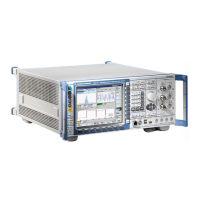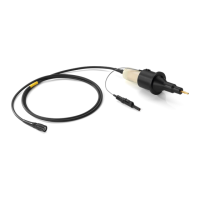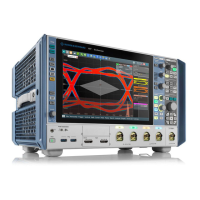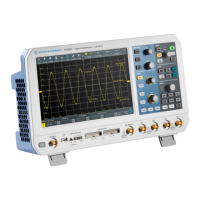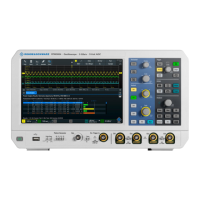Measurement Control CMU
1100.4903.12 3.18 E-9
Table 3-5 Measurements in function group Audio (with option CMU-B41)
Menu Function
Analyzer/Generator
Generates a single-tone sinusoidal audio signal and measures the DC and AC voltage and
the Total Harmonic Distortion and Noise of a single-tone audio signal.
Multitone
Generates a composite audio signal consisting of up to 20 individual fixed-frequency tones
with configurable frequency and level. An audio signal containing the same tones can be
analyzed in a single measurement and displayed in a bar chart. A limit check is provided for
all results.
A graphical overview of the menus is given at the end of this chapter.
General Settings
A number of settings can be made in several of the configuration menus assigned to the individual
measurement groups. In combination, these settings define the scope of each measurement, i.e. the
number of results acquired and the type of results displayed. The following brief overview is intended to
avoid confusion of terms.
Application
Applications are different measurements belonging to the same measurement
group. They effectively split up a measurement group into various related
subgroups which can be configured separately.
They are selected via the Application softkey in the measurement menus.
Statistic Count /
Statistics Cycle
The statistic count is equal to the integer number of evaluation periods which
form one statistics cycle. The definition of an evaluation period changes from
one measurement to another:
• The evaluation period for Spectrum measurements (function group RF)
corresponds to the duration of a sweep.
• The evaluation period for Multitone measurements (function group Audio)
corresponds to the time until the system has settled and a valid result is
available.
• In all digital radio communication systems (GSM, TDMA, CDMA, ...), the
information is transmitted in periodic timeslots of equal length. These slots
provide natural evaluation periods for all measurements on digital network
tests. See the relevant manuals for more specific information.
Depending on the repetition mode (see below), a measurement may extend
over one or several statistics cycles. The statistic count is set in the Control tab
of the configuration popup-menus assigned to each measurement group. If this
parameter is omitted, a statistics cycle always comprises just one evaluation
period.
Repetition Mode
The repetition mode defines how many statistics cycles are measured if the
measurement is not stopped by a limit failure (see stop condition On Limit
Failure below). Two modes are available for all measurements:
Single Shot The measurement is stopped after one statistics cycle
Continuous The measurement is continued until explicitly terminated by
the user; the results are periodically updated
A third repetition mode is available in remote control:
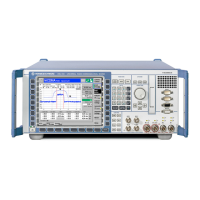
